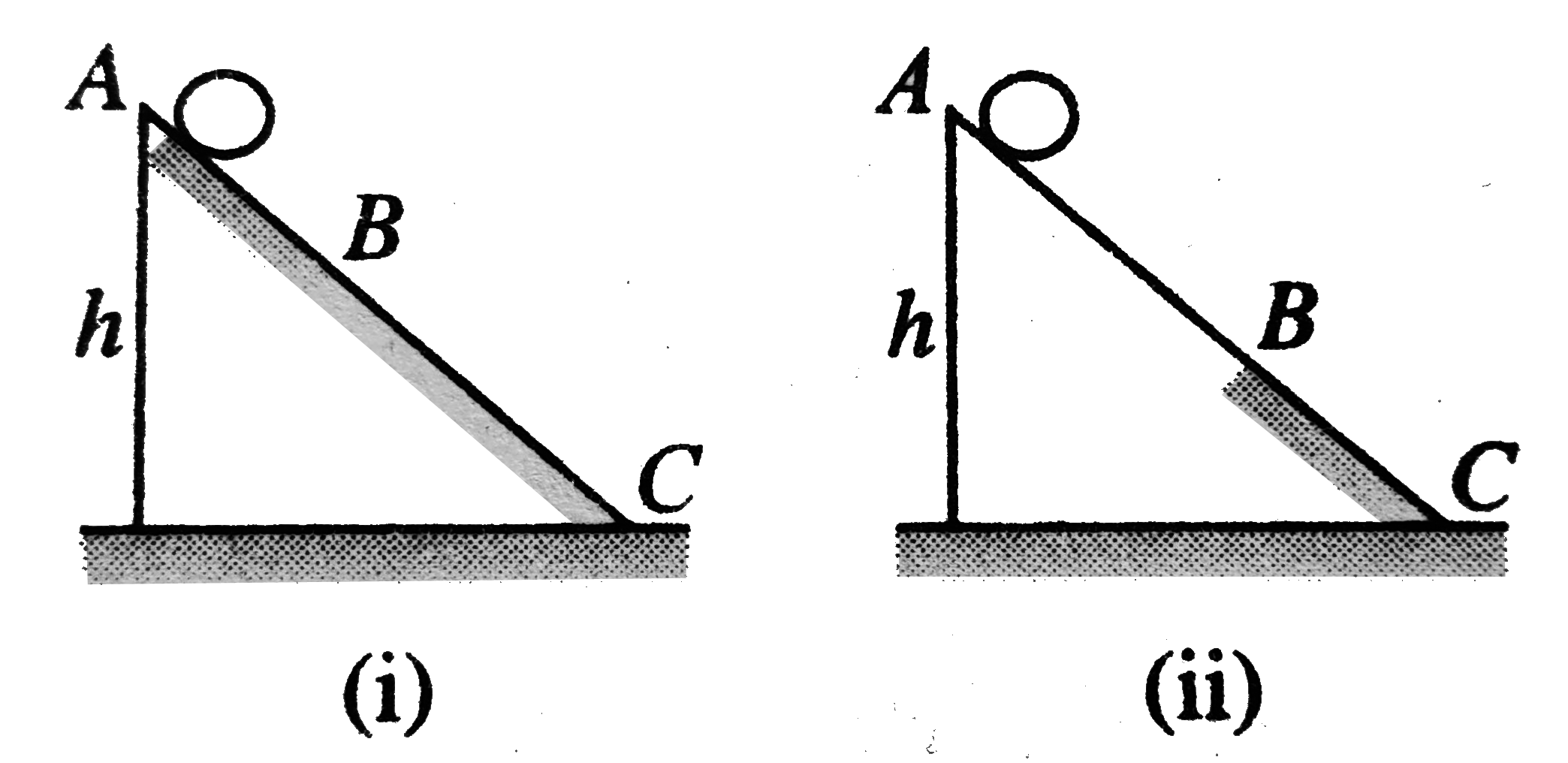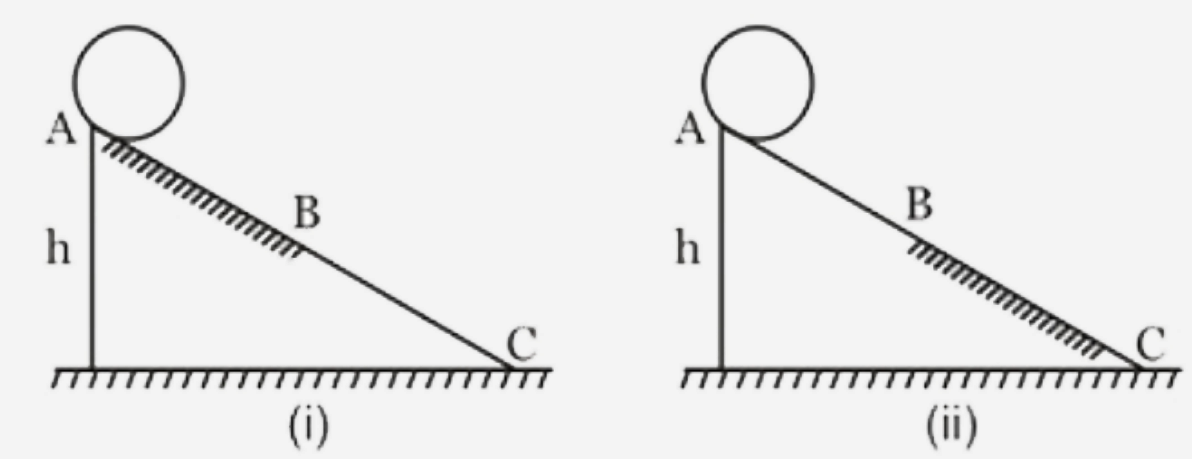In both the figures all other factors are same, except that in figure (i) AB is rough and BC is smooth while in figure (ii) AB is smooth and BC is rough. In figure (i), if a sphere is released from rest it starts rolling. Now consider the figure (ii), if same sphere is A released from top of the inclined plane, what will be the kinetic energy of the sphere on reaching the bottom:

is same in both the cases
is greater in case (i)
is greater in case (ii)
information is unsufficent
The correct Answer is:B
Step by step video, text & image solution for In both the figures all other factors are same, except that in figure (i) AB is rough and BC is smooth while in figure (ii) AB is smooth and BC is rough. In figure (i), if a sphere is released from rest it starts rolling. Now consider the figure (ii), if same sphere is A released from top of the inclined plane, what will be the kinetic energy of the sphere on reaching the bottom: by Physics experts to help you in doubts & scoring excellent marks in Class 11 exams.
Updated on:21/07/2023Topper's Solved these Questions
- ROTATIONAL MOTIONBook:DC PANDEYChapter:ROTATIONAL MOTIONExercise:More than one option is correct
Explore 36 Videos
- ROTATIONAL MOTIONBook:DC PANDEYChapter:ROTATIONAL MOTIONExercise:Comprehension Type Questions
Explore 41 Videos
- ROTATIONAL MOTIONBook:DC PANDEYChapter:ROTATIONAL MOTIONExercise:Integer Type Questions
Explore 17 Videos
- ROTATIONAL MECHANICSBook:DC PANDEYChapter:ROTATIONAL MECHANICSExercise:Subjective Questions
Explore 2 Videos
- SEMICONDUCTORS AND ELECTRONIC DEVICESBook:DC PANDEYChapter:SEMICONDUCTORS AND ELECTRONIC DEVICESExercise:More than One Option is Correct
Explore 3 Videos
Similar Questions
In both the figure all other factors are same, except that in figure (i) AB is rough and BC is smooth while in figure (ii) AB is smooth and BC is rough. The kinetic energy of the ball on reaching the bottom

View SolutionA hollow sphere is released from top of an inclined plane of inclination 30° and length of inclined plane is I. If sphere rolls without slipping then its speed at bottom is
View Solution
Knowledge Check
A sphere is released on a smooth inclined plane from the top. When it moves down, its angular momentum is
Aconserved about every pointBconserved about the point of contact onlyCconserved about the centre of the sphere onlyDconserved about any point on a line parallel to the inclined plane and passing through the centre of the ballIn the following figure all surfaces are smooth. The system is released from rest , then :
 Aacceleration of wedge is greater then gtanθBacceleration of m is g√1+2cos2θCacceleration of m is gDacceleration of wedge is gsinθ
Aacceleration of wedge is greater then gtanθBacceleration of m is g√1+2cos2θCacceleration of m is gDacceleration of wedge is gsinθTwo spheres of unequal masses but of the same radii are released from the top of a smooth inclined plane. They roll down the plane without slipping. Which one will reach the bottom first?
ABoth will reach the bottom at the same timeBHeavier sphereCLighter sphereDNone of the above
A body of mass m is released from the top of a rough inclined plane as shown in figure. If the frictional force be F, then body will reach the bottom with a velocity

View SolutionTwo uniform solid spheres having unequal rdii are released from rest from the same height on a rough incline. Ilf the spheres roll without slipping
View SolutionA sphere and circular disc of same mass and radius are allowed to roll down an inclined plane from the same height without slipping. Find the ratio of times taken by these two to come to the bottom of incline :
View SolutionA block slides down a smooth inclined plane when released from the top, while another falls freely from the same point :
View SolutionA solid sphere, a hollow sphere and a ring are released from top of an inclined plane (frictionless) so that they slide down the plane. Then maximum accelerraton down the plane is for (no rolling)
View Solution

